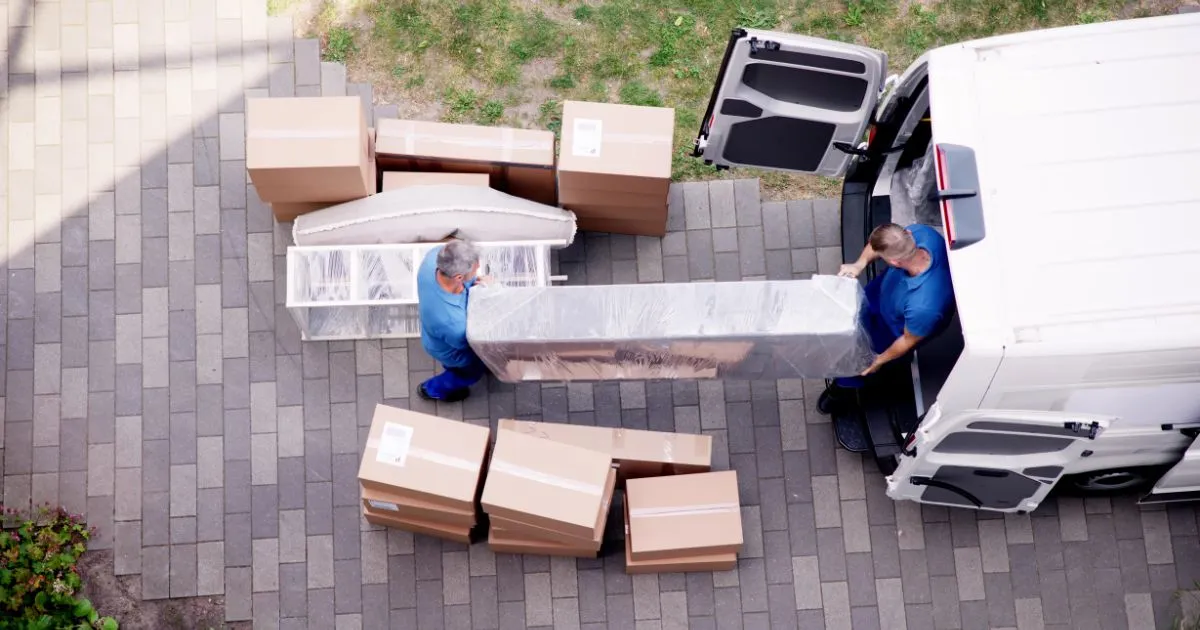The Complete Guide to Planning a Stress-Free House Move in Australia
Moving house ranks among life's most stressful events, sitting right alongside major milestones like changing careers or planning a wedding. Between coordinating timelines, packing up years of accumulated belongings, and managing the logistics of getting everything from point A to point B, it's no wonder that moving day can feel overwhelming. But here's the good news: with proper planning and the right strategies, you can transform what feels like chaos into a surprisingly smooth transition.
Whether you're relocating across the city or making a tree change to somewhere like tropical North Queensland, understanding the full scope of what's involved in a house move can save you time, money, and a massive headache. From selecting the right professionals to handle your belongings to managing the often-overlooked challenge of parking logistics on moving day, every detail matters. Let's break down everything you need to know to make your next move as painless as possible.
Choosing the Right Removalists: Your First Big Decision
The foundation of any successful move starts with selecting quality removalists who understand the local area and can handle your specific needs. If you're relocating to or within regional areas, booking house removalists servicing Cairns or other regional centers requires extra consideration. Regional moves often come with unique challenges like longer travel distances, limited availability during peak seasons, and the need for removalists who understand local road conditions and access issues.
When vetting removalists, don't just jump at the cheapest quote. Ask about their insurance coverage, read recent customer reviews, and confirm they have experience with moves similar to yours. A quality removalist will conduct a pre-move assessment, either in person or via video call, to provide an accurate quote based on the volume of items and any special requirements like piano moving or antique furniture handling.
Professional removalists do more than just load boxes onto a truck. They bring expertise in packing fragile items, disassembling and reassembling furniture, and navigating tricky spaces like narrow staircases or apartment buildings with limited elevator access. The right team can cut your moving time in half and dramatically reduce the risk of damage to your belongings or property.

The Parking Puzzle: A Critical Moving Day Factor Most People Overlook
Here's something that catches many people off guard: parking logistics can make or break your moving day. While you're focused on packing and organizing, forgetting to sort out proper parking arrangements for the removalist truck can lead to delays, extra costs, and unnecessary stress.
In residential areas, particularly in suburban streets or apartment complexes, you'll need to ensure there's adequate space for a large moving truck to park close to your property. These trucks are substantially bigger than regular vehicles and require clear access for several hours. If you're in a busy neighborhood or moving during business hours, that prime parking spot right in front of your house might already be occupied.
For apartment dwellers, the parking challenge multiplies. Many apartment buildings have loading zones that need to be booked in advance. Some require you to reserve the loading dock and obtain special permits days or even weeks before your move. Contact your building manager early and ask about their specific procedures. There's often paperwork to complete, and some buildings charge fees for holding the loading zone or using the service elevator.
Street parking restrictions add another layer of complexity. Many councils require you to apply for temporary no-parking permits for moving day. These permits allow you to reserve parking spaces directly in front of your property, ensuring the removalists have clear access. Applications typically need to be submitted at least 48 hours in advance, and there's usually a small fee involved. Check your local council website for specific requirements and application forms.
Timeline Planning: When to Do What
Successful moves don't happen by accident. They're the result of careful planning spread across several weeks. Here's a realistic timeline to follow:
Six to Eight Weeks Before Moving Day
Start decluttering ruthlessly. Moving is the perfect opportunity to pare down your possessions. Go room by room and separate items into keep, donate, sell, and trash categories. That exercise bike you haven't used in three years? Time to let it go. Those duplicate kitchen gadgets taking up drawer space? Someone else can use them.
Research and book your removalists during this window, especially if you're moving during peak season (summer holidays, end of month, or weekends). Get multiple quotes and read the fine print about insurance, cancellation policies, and what's included in the price.
Four Weeks Before
Start collecting packing supplies. You'll need more boxes than you think, plus bubble wrap, packing paper, tape, and markers for labeling. Start packing items you won't need in the coming weeks, like out-of-season clothes, books, and decorative items.
Notify important parties about your address change: utilities companies, banks, insurance providers, subscription services, and government departments. Update your driver's license and vehicle registration details. Arrange for mail redirection through Australia Post.
Two Weeks Before
Apply for any necessary parking permits from your local council. Confirm details with your removalists, including the exact time they'll arrive and any last-minute changes to your inventory. If you're renting, schedule your final inspection with your property manager and ensure you understand the cleaning requirements for getting your bond back.
Start using up freezer contents and avoid major grocery shops. Pack a separate box of essentials you'll need immediately in your new home: toilet paper, basic tools, phone chargers, medications, a change of clothes, and basic kitchen items.

Day-of-Move Strategies That Actually Work
Moving day arrives faster than you expect. Here's how to handle it like a pro:
Wake up early and do a final walkthrough of your home before the removalists arrive. Check all cupboards, drawers, and storage spaces. It's surprisingly easy to overlook items tucked away in bathroom cabinets or hallway closets.
Designate one person as the main point of contact with the removalists. Having multiple people giving different instructions creates confusion. The designated person should be familiar with what needs to go where and any special handling requirements.
Keep important documents, valuables, and irreplaceable items with you rather than on the truck. This includes passports, birth certificates, jewelry, laptops, and hard drives. These items are typically not covered by removalist insurance anyway, and you'll have peace of mind knowing they're secure.
Take meter readings at both properties and photograph them. This protects you from disputes about utility usage. Do the same for any existing damage at your new property, documenting everything before your furniture arrives.
Managing the Unexpected: Problem-Solving on Moving Day
Even with perfect planning, things can go wrong. The removalist truck might be delayed in traffic. Weather might not cooperate. Your new property's elevator might break down. Here's how to handle common curveballs:
Build buffer time into your schedule. If you need to be completely moved out by 5 PM, tell your removalists you need to be done by 3 PM. This extra cushion can save you from penalty fees if your old property rental ends at a specific time.
Have a backup plan for parking. If your no-parking permit doesn't prevent other vehicles from parking in the space (some people ignore them), have a Plan B location identified nearby. Know where the nearest legal parking is, even if it means a slightly longer carry for the removalists.
Keep contact numbers handy: your removalists, real estate agents for both properties, building managers, and council permit offices. If something goes wrong, you want to be able to sort it out quickly without hunting for phone numbers.

The First 24 Hours in Your New Home
Once everything's off the truck, the real work begins. Rather than trying to unpack everything immediately, focus on making your new space livable.
Set up beds first. After a exhausting moving day, you'll want somewhere comfortable to sleep. Next, get your bathroom functional with shower curtains, towels, and toiletries. Then tackle the kitchen enough to prepare basic meals.
Check that all utilities are connected and working properly. Test taps, light switches, heating and cooling systems, and appliances. If anything isn't working, report it to your landlord or make note of repairs needed if you've bought the property.
Locate your fuse box, water meter, and any emergency shut-off valves. In an emergency, you don't want to be searching for these. Take photos of instruction manuals for appliances and keep them in a dedicated folder on your phone.
Making It Official: Post-Move Administration
The weeks after your move involve tying up loose ends. Update your address with your employer, doctor, dentist, and children's schools. Register with local medical services in your new area. If you've moved to a new electoral district, update your enrollment with the Australian Electoral Commission.
Transfer or set up new accounts with local service providers: internet, electricity, gas, and water. Compare providers in your new area as you might find better deals than you had previously.
Get to know your new neighborhood. Locate the nearest supermarket, medical center, pharmacy, and post office. Introduce yourself to neighbors when opportunities arise naturally. Join local community groups online to stay informed about area news and events.
Final Thoughts: Making Your Next Move Count
Moving house doesn't have to be the nightmare experience many people describe. With strategic planning, attention to often-overlooked details like parking logistics, and the right professional help, you can significantly reduce the stress involved in relocating.
The key is starting early and staying organized. Create checklists, set reminders, and don't try to do everything the night before. Remember that a successful move is about more than just transporting your belongings from one address to another. It's about transitioning smoothly into a new chapter of your life.
Whether you're downsizing, upgrading, or simply seeking a change of scenery, treat your move as an opportunity. Use it as a chance to declutter, to reimagine your living space, and to start fresh. With the strategies outlined in this guide, you're well-equipped to handle whatever challenges come your way.
Start planning today, and you'll thank yourself when moving day arrives and everything falls into place exactly as it should.
**Daniel Battaglia, Parking Made Easy:** As part of the Parking Made Easy team with the assistance of Generative AI, Daniel Battaglia offers his experience in the car parking industry. He is dedicated to providing valuable information and resources to help you make smart parking choices and has been widely quoted in national media outlets. Connect with Daniel directly at daniel@parkingmadeeasy.com.au for further assistance.




